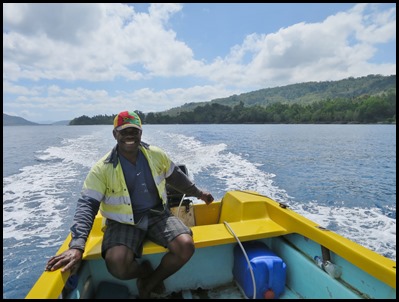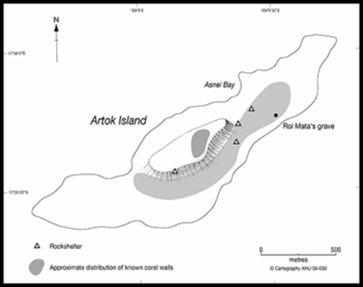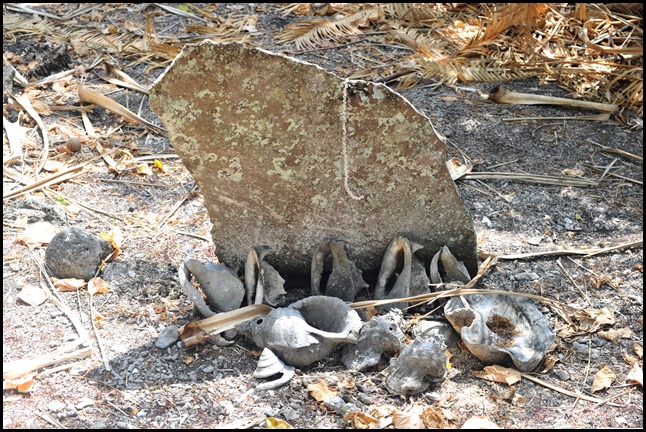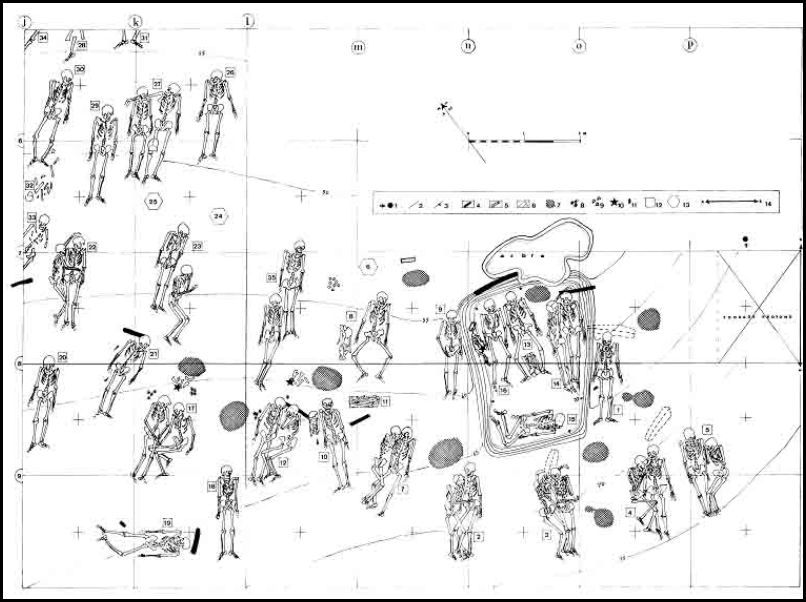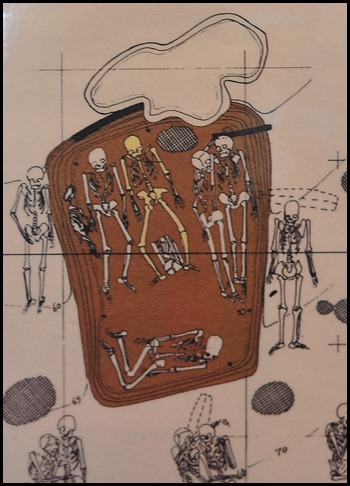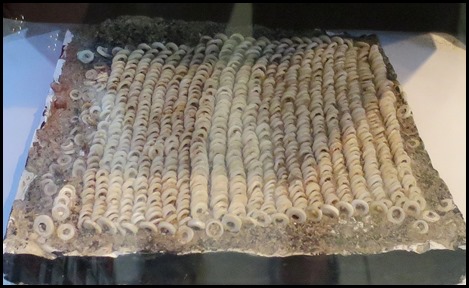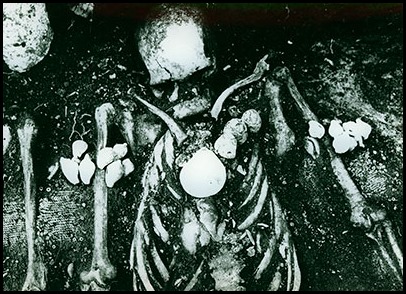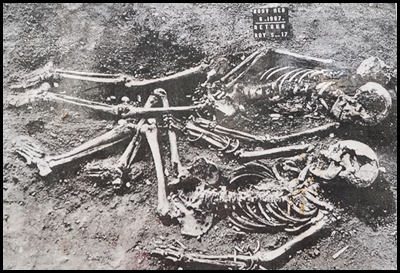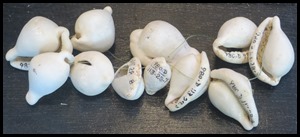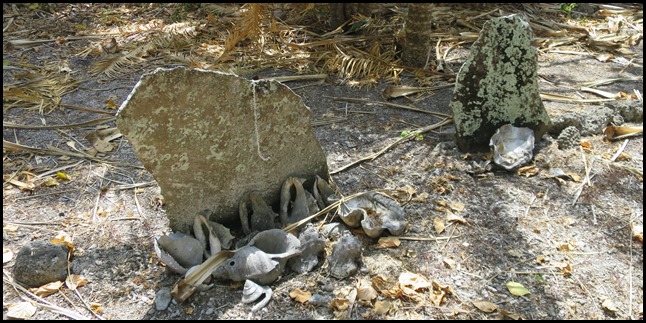Artok Island

|
Artok Island – Roi Mata’s
Burial Ground
Sael our taxi driver dropped us off and bade us farewell, he would pick us up later in the afternoon. We walked with Topei down to the beach where our boatman introduced himself as Captain. Off we went across the Hilliard Channel toward Artok island.
Artok Island is also known as Aretoka, Eretoka, Retoka or Hat Island as Captain Cook called it – whichever direction you approach from, the island looks like a hat. A series of raised coral terraces give the island its distinctive shape, with a wide but low brim surrounding a small, central plateau. Just ninety metres at its highest point, the island is approximately two and a half kilometres long and six hundred and seventy metres wide. The island is surrounded by an exceptionally rich coral and marine fauna environment, and is also a refuge for several endemic species, including a skink (Cryptoblepharus novahebridicus), the scrub duck (Megapodius freycinet) and the coconut crab (Birgus latro). The survival of these floral and faunal species on Artok reflects its long period of human abandonment after the burial of Roi Mata, and the absence of many invasive species introduced since European contact.
We landed and a short walk from the beach we were there. Roi Mata’s grave is located on the eastern side of the island, within an area of stone walls associated with the former residents of the island, who were given land on Lelepa and Efate in exchange for surrendering their island for the burial. A number of upright gravestones mark the central portion of the burial, including the deep pit within which Roi Mata and four others were first buried.
Roi Mata’s head stone
The 1967 archaeological excavation by José Garanger, which opened only a portion of the burial site, uncovered the remains of between fifty one and fifty four people. Topei said a prayer over Roi Mata and then described the area to us. We were amazed that there were no fences and we could actually stand on the grave site. Between the World Heritage document and the pictures taken at the excavation more details of the story unfold. Roi Mata’s family and court, fearful of his extraordinary powers [Lelepa:natkar] even in death, opted not to bury him within his residential yard at Mangaas. Instead, they acquired the right to bury him on the small near-shore island of Artok, which is visible from almost all points within Roi Mata’s Domain and yet lies at a safe distance from most settlements. After Roi Mata’s body had been carried around the various settlements in his domain, his munuwai magic men part the sea, creating a path from the mainland point of Nangus Katou across to Artok Island, along which his body was carried to its final resting place. Once buried with members of his court and family, many of them alive at their internment, Roi Mata has been left undisturbed until José Garanger was given permission to excavate a portion of the burial site.
Burial Plan
Close-up of Chief Roi Mata’s burial group. Roi Mata is highlighted in yellow.
He was an old man by the time of his death, with just a single tooth left in his mouth. Relatively lightly decorated, with shell armlets, a large shell chest pendant, a single pig’s tusk on his left wrist, and two on his right wrist, his legs were flexed outwards, a common feature of burials of important chiefs in Western Polynesia. Between his legs was laid a packet of bones of another adult, possibly a favourite wife or close relative [gender cannot be determined from these particular remains] {Topei said they belonged to his only son, retrieved from their village burial site}.

Four other people were buried with him at the same time, and we can presume that they were either killed or drugged or buried alive in order to be interred in the company of Roi Mata, soon after his death. On Roi Mata’s right side was a large adult male, with his left leg flexed towards Roi Mata, and his right leg laid out straight (Figures 2.27 and 2.28). This figure had a full pig buried to his right, probably connected to his right wrist by a rope of twine; pigs or just the symbolic pig’s rope were still common features of chiefly burials in the Efate region in the 19th century. To Roi Mata’s left lay an adult couple, the man on his back and the woman turned in towards him. A final figure in the deep burial pit was that of a young woman, laid out perpendicular to the other figures and below their feet, her knees drawn tightly together, probably as a result of being bound, and her head raised up (Figures 2.27 and 2.28). On the basis of ethnographic analogues, and the interpretations of contemporary chiefs, it is likely that the central figure, Roi Mata, was accompanied in his grave by his magic man (munuwai) or assistant chief (ataf or atavi – perhaps consigliere or camerlengo. Steve’s dad holds the title Atavi), holding a pig offering for ), holding a pig offering for the guardians of the underworld, his warrior (mwau) together with the warrior’s wife, and his own youngest wife, yet to bear children, buried alive and conscious at his feet, her legs and arms bound with rope. This initial, deep burial pit was then filled in, and the ground stamped flat above it. The raised head of the young wife may indicate a desperate attempt to survive as the soil filled in around her. Above the heads of Roi Mata and of his warrior, two large slabs of prismatic basalt were erected to serve as head stones, and a small sapling of pisonia grandis was planted behind them.
The earth was trampled flat and the island was declared a forbidden land (fanua tapu).
The week after we came here we went back for a proper visit to the Cultural Centre, our guide there was Edgar – originally from Pentecost Island of the octopus clan. So we have Edgar’s stories, Steve’s at the Secret garden and Topei’s of the Roi Mata Cultural Tour, committee member and our guide today. We take the data in the World Heritage Document as the most reliable. The Custom stories – or word-of-mouth-handed-down-through-the-generations, were very much highlighted as we stood by the grave. All three men gave similar but different bits to the legend. In this blog we have tried to share some of them. Steve said the tusk bracelets showed wealth and also the number showed where a man was on the social ladder – the chief wearing the most and he had two or three wives. Topei said the chief had fifty wives and wore a tusk for each. Edgar said they were for status and he had five wives.
Yesterday at the Secret Garden we had read – Excavation showed that a large area had been laid out, digging the soil out to a depth of about 30 cm [level II], and within it a deeper burial [level III]. Roy Mata was buried there along with a couple to his left, a man to his right and a very young woman who was stretched out at his feet at right angles to him. This group is in accord with tradition. Such a group was also found at Mangarisu in the burial of the first Mwasoe [Mwasoe Nua] but there the woman was placed at the head of the chief not at his feet. M. Glaumont writes, ‘when a chief dies, his wives, or at least those of them without children, must die to keep the dead man company..... her body is placed under that of her husband, in such a way that the two bodies form a cross’. Dick Mwasoe at Mangarisu stated that the man to the right of Mwasoe Nua was his atavi. At Retoka the man to the right of Roy Mata was perhaps the same.
A pig was placed in the pit at the time of filling: It is in fact on the side of the pit and slightly above the right forearm of skeleton 16. A slab was placed behind Roy Mata’s head before the pit was filled, for the head is raised and leaning on this slab. A second slab was later stood a little above the head of 14a. This first burial was followed, in an area previously made ready, by a funeral ceremony in which the individuals buried on level II probably participated.
The ground is compacted as if it had been trampled, several individuals wore dance ornaments. Some pigs were sacrificed and eaten [remains in K-8 and L-8], some fires were lit but they seem too small to have been used for cooking food. It is possible that ceremony included cannibalism: some broken and scattered bones, a jointed leg, were found in the north of the burial. The packet of long bones arranged in a bundle could be an offering: an ankle ornament was found and a forearm still carried six trochus bracelets.
The grave of Roi Mata with the special four would have been left for a period of one hundred days. Still used for chiefs in the 19th century and today. Then a large group of mourners would have returned for the second phase of the ceremony. A mass of people would have voluntarily laid down for live burial.
On the surface of level II lay thirty three individuals: seventeen females and sixteen males some isolated near the deep burial or arranged in couples in a circle around this burial are richly adorned. The other, isolated, are much less so or not at all: skeletons 35a, 20 and 26. This distinction is again emphasised by the slabs laid flat, the standing stones and conch shells on top of the upper soil of level II. Doubtless in both cases it is a question of the individuals who, according to the tradition, volunteered to accompany Roi Mata to the land of the dead, or of those who were sacrificed. Some of the former, like Roi Mata, were accompanied by secondary “packet” burials. The uneven distribution of the different ornaments, pendants, bones, beads or small shells, waistbands and bracelets, the differences in size and shape of the standing stones, are perhaps confirmation of tradition, according to which representatives of various clans followed Roi Mata to his grave. It is also possible that the megapod eggs and the unworked shells near the burial are related to the personal symbols of the institution created by Roi Mata. All the men in the collective burial are lying on their backs with their arms at the sides of the bodies in an attitude of repose. The women associated with them are in diverse positions, but they seem always to be seeking protection from their companions. They hold the men by the neck, waist or arm, their feet are pressed closely against the men, their fingers and toes are clenched.
According to Lelepa and Tongoa informants the men, after having taken a very strong dose of kava, were already deeply asleep when they were buried. Ti Tongoa Mata, chief of Mangarisu at Tongoa, stated that a deadly poison was always put in the kava at these times. Women never drank this ritual drink which induces sleep and anaesthetises. They were usually buried alive or strangled before being buried although in one of the traditions collected by Gulart in 1966 reference is made to the mixing of oil and kava which was given to women to drink to stun them so they could be buried alive with an old dead chief. Evidence of small fire hearths at the burial site are signs that kava had been consumed as after strong kava drinkers can feel a cold sensation in the stomach. Live burial and widow strangling were still practised when Europeans arrived. John Geddie, a missionary in the Southern islands from 1848-1872 insisted that converts renounce, “the pagan custom that demanded that married women should wear a cord around their necks so that could be strangled on the death of their husbands”. At Tongoa the widow was strangled if she didn’t have the courage to hang herself. The following class of people were buried alive at ritual burials. People who were too old, incurably sick or infirmed, wives of dead chiefs, wives of a chief whose young daughter had died, the child of a women dead in childbirth, a sick sorcerer, the wife of a dead sorcerer. All the individuals of the collective burial at Hat Island Retoka, except for two females are orientated towards the south-west, that is as at Lelepa, Mangaasi and Mele, towards the entrance of the land of the dead outside Devil’s Point.
ALL IN ALL STRANGELY MOVING VERY HONOURED TO SEE SUCH A UNIQUE SITE
|

